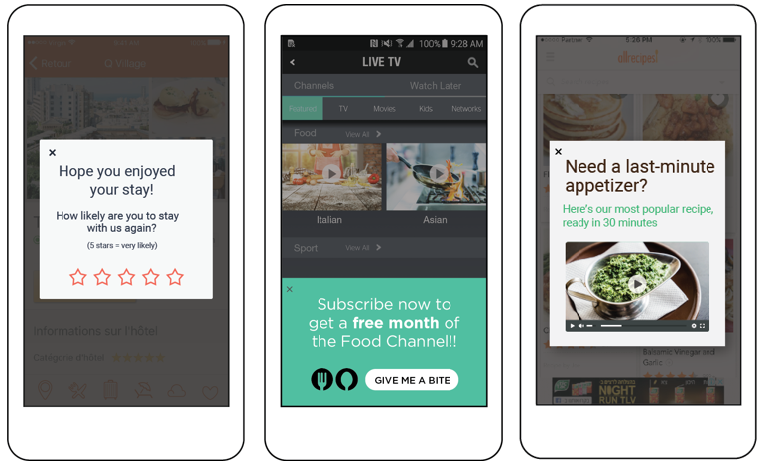
Developers put so much time and effort into their applications during development, it seems once the application goes live they no longer give it that extra attention. Instead, developers have become accustomed to just releasing bug fixes to their applications when necessary, adding functionality at a much slower pace.
This, however, is a huge problem if they want to retain their users and keep them engaged, according to Ty Rollin, chief innovation technology officer for Mobiquity, a digital engagement service provider. “Bug fixes don’t bring value to your end users,” he said. “If your app is broken then you are already short on value with the consumer anyway.”
In order to continuously provide value and keep your customers engaged, you have to continuously improve and update your application. According to Shah Kaminitz, founder and CEO of Insert, a mobile app engagement provider, so much of the action happens after development is done. “After you design and build your application, it is by no means the end of the road. There are constantly new ideas and new ways on how to improve the business performance of your app whatever the parameter you are optimizing for,” he said.
Kaminitz notes that mobile applications come with a bit more complexity than web development. According to Kaminitz, developers can almost immediately change a website with new features and experiments. In mobile development, the backlog tends to inflate quickly, and with the limited amount of resources developers end up only having time to fix the most urgent issues, which are usually bug fixes, and don’t actually get to improving the app experience.
Some ways Kaminitz and Rollin believe developers can retain and engage users include:
Defining what their KPIs are. “It sounds obvious, but it is not that obvious. It does require some thinking,” said Kaminitz. “Do you want to keep people in the app for longer periods of time? Do you want to increase the session length? What will get you a particular business result? Do you want to push people to other areas of the app?”
Beyond that, developers should also be experimenting with multiple tactics at the same time. “There isn’t a blueprint in mobile for achieving the goal you want to achieve. There are multiple possible approaches and tactics that you might discover will work for you, but with different audiences. Certain users may respond better to one approach than others, meaning you need to implement both of them in parallel,” Kaminitz said.
Don’t expect to find one answer. Keep experimenting. “If you are only doing one kind of test and putting it out there then looking at your numbers, you are not going to succeed,” said Rollin. “The more chances you have of testing your hypothesis, the better chances you have of success.”
Put a product manager in place. According to Rollin, as soon as you put a product manager in charge you no longer have a really big MVP [minimum viable product] launch of a product. Instead, it becomes a small one that you continue to build. “You actually start small, you push it out, test to other people, do more testing, and you stay away from the software only methodology of build it, deploy it, and bug fix it.” he said
A product manager will be able to take care of the application over time, look at the status of it, derive insights from the analytics and drive the backlog, Rollin explained.
Talk to your users. “Get a standing panel of consumers who are willing to provide feedback and interview them on a regular basis,” said Rollin. “Take that information, fold it into a release, and treat them like your partner in developing your software. You have to really listen to why someone wants your software.”
Learn when to walk away. According to Rollin, if you keep seeing users leave your app after every release it may be time to pull the plug.
Mobiquity and Insert recently announced a new partnership to provide real time, in-app personalization to their mobile users. Together, the companies will work on providing personal experiences developers and marketers can use to get an understanding of their customer, and deploy in-app engagement features quickly.
“For today’s enterprises, delivering the right mobile moments is critical to customer experience and brand loyalty and even impacts revenue,” Rollin said. “Our partnership with Insert will help clients to capitalize on these opportunities by empowering them to quickly and easily improve in-app engagement.”
Google’s best practices for Android engagement:
Google has also touched on the importance of improving app engagement for software developers. Recently, the company introduced its five best practices for making users stick. The five practices are:
- Build a high quality app to engage users: The idea is the better the user experience your app provides, the more likely it is that users will use it.
- Make your users feel at home. Personalizing your app is the first step of a good long lasting relationship.
- Optimize feature releases as a way to increase user engagement. Release new features frequently and listen to user feedback about what they want and don’t want.
- Use notifications wisely. Try not to annoy your users. Make sure your notifications are relevant and creative.
- Reward your most engaged users. In order to keep your most loyal users happy, provide them some value such as sneak peeks of upcoming features or providing them with discounts and promo codes for your application.
“Driving installs is important to growing a user base, but it’s not much use if your app sits on users’ devices and is rarely opened. In a competitive app landscape, it’s increasingly important to engage and retain users over the long term to build a successful business. Users who are using your app more will have a higher lifetime value and be more likely to share your app,” Niko Schröer from Google Play’s business development team wrote in a post.






